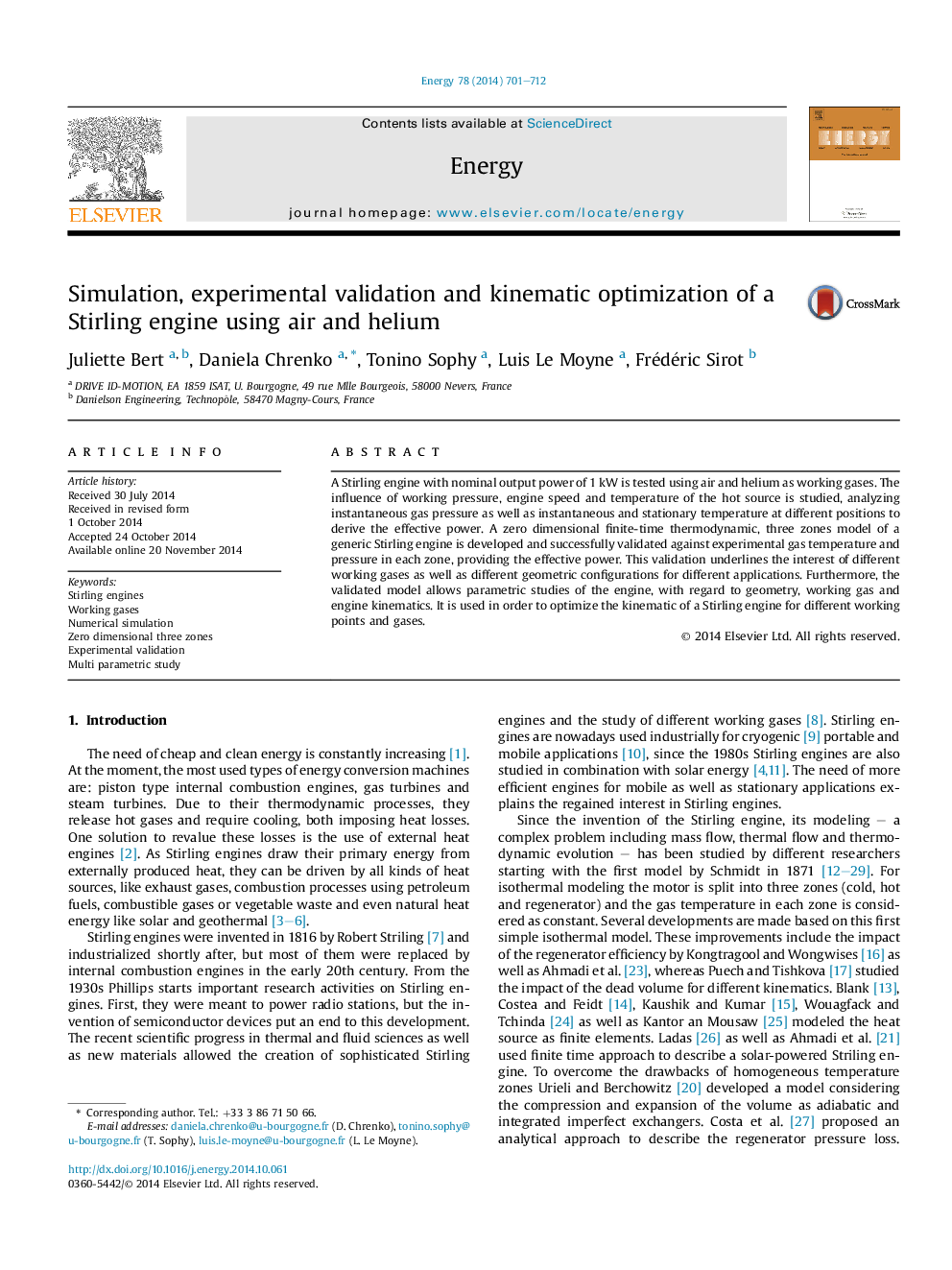| Article ID | Journal | Published Year | Pages | File Type |
|---|---|---|---|---|
| 8076188 | Energy | 2014 | 12 Pages |
Abstract
A Stirling engine with nominal output power of 1Â kW is tested using air and helium as working gases. The influence of working pressure, engine speed and temperature of the hot source is studied, analyzing instantaneous gas pressure as well as instantaneous and stationary temperature at different positions to derive the effective power. A zero dimensional finite-time thermodynamic, three zones model of a generic Stirling engine is developed and successfully validated against experimental gas temperature and pressure in each zone, providing the effective power. This validation underlines the interest of different working gases as well as different geometric configurations for different applications. Furthermore, the validated model allows parametric studies of the engine, with regard to geometry, working gas and engine kinematics. It is used in order to optimize the kinematic of a Stirling engine for different working points and gases.
Related Topics
Physical Sciences and Engineering
Energy
Energy (General)
Authors
Juliette Bert, Daniela Chrenko, Tonino Sophy, Luis Le Moyne, Frédéric Sirot,
